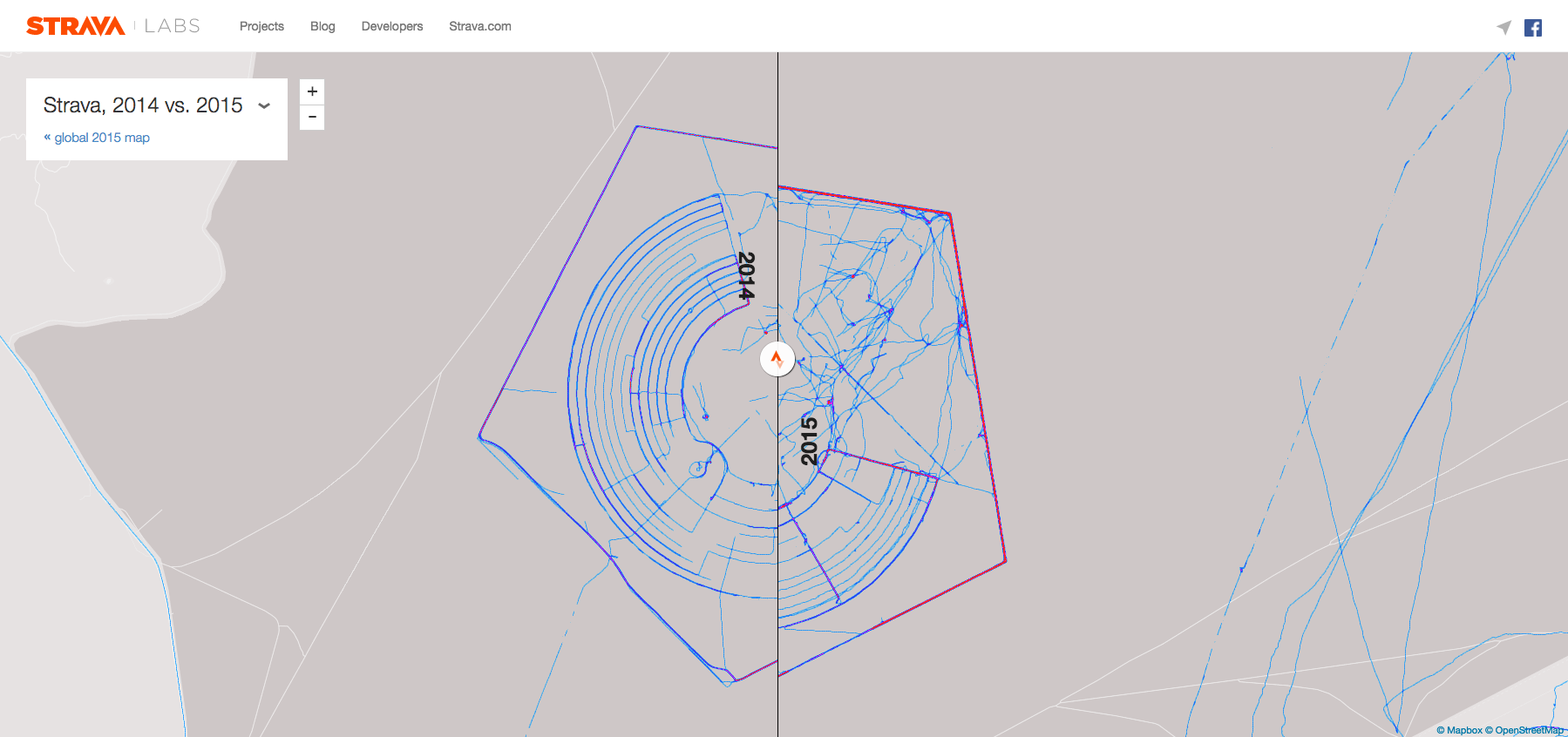When I was younger, I’d go running with my girlfriend in the park. When I chose our route, I would mix in hills (they are hard to avoid), and maybe stretch the distance a bit. She was a runner, but hated running hills, and often took the difficulty of my chosen route personally, as if I was tricking her. There were times when she was downright pissed. I would say, “I didn’t put that hill there.” That went over like a lead balloon.
As a solution, we decided to map our routes together. So, we measured the distance and mapped the route the old-fashioned way. We’d take the car to the top of the Golden Gate Park. Watching the odometer, we’d drive to the one mile point, get out of the car and mark a line on the road in chalk. We’d continue marking the miles off all the way to the beach and back up. In less than a week, all the chalk marks would be gone. Street sweeping, overspray from the sprinklers and foot traffic would wipe it all away. Even spray paint didn’t last more than a couple of weeks. We also tried noting landmarks like a tree or a no parking sign that corresponded with the mile distances, but these things changed as well.
Now I have my choice of run tracker apps to use for this purpose. They not only mark the distance, but the overall time, lap time, elevation and even the playlist you listen to. I have installed a bunch. On my android phone, I have endomondo, runkeeper, immapmyfitness, google tracks, runstar, recordbeater, and rhythmrunner. I’ve tried each of them at least once. They all purport to track your run and give you precise records of your performance.
Update: “The 5 Absolute Best Running Apps” from the Babble Out Overview of the 2017 best running apps from the Babble Out.
That’s the theory. GPS on my Droid X is a little dodgy, however. Sometimes all I have to do is to turn the GPS off and back on again. Other times I have to turn off the whole phone. Once I’ve gone through the reboot cycle and the phone has my GPS position. I can start and do the run.
Phones are amazing. They have all the sensors in them to track and respond to your location speed, cadence and the processing power to be an excellent sports tracker. Except for one thing, that capacitance touch screen is really not good. First, when you are running, it is easy to hit the wrong button or part of the screen. You are bouncing up and down, glancing away to make sure you don’t run into anything, and you are maybe a little short on breath. The odds of hitting the wrong button are pretty high. The wrong button may end your workout prematurely, pause your workout so you end up not recording the last mile that you ran, or call your boss. That’s not the worst part. Sweat. Touch screens don’t work so well when they are wet. One drop of sweat on the screen and the phone goes in paroxysm, randomly triggering buttons, bouncing around screens and not responding to touches. The fit is irreversible. The only cure is to wipe the sweat off the screen and reboot. This messes up my running rhythm, and it happens with every running app. This may have skewed my opinion of some of them.
Regardless, I’m sticking with endomondo. The interface is really good. I can’t remember if I had to login the first time or not. But now I just hit start and run. It tells you when you hit the mile laps and your pace. You can pause anytime and it stops adding to your time. You resume and it picks up where you left off without penalizing you for the time off. You can automatically have it pause when you stop moving. I turned this off because my cranky GPS, but I like the idea. Although it records your workouts on your phone including the route maps, there are a whole bunch of other goodies on the website. You can see all your workouts, participate in distance and speed challenges and find other runners in your area.
There may be 6 million users worldwide, but they aren’t in San Francisco. That’s disappointing, because the social features on the website are awesome. You can see the profiles, pics, routes and workouts of other people in your area (should they choose to share their information). You can view who is running or cycling right now and track their progress in real-time. Of all the location-based apps, this one is delivers tremendous functionality. Just for kicks, I picked a place with a lot of users, Copenhagen to see who was doing what. There were at least 50 people running or cycling around. If you’re single, you could scan for attractive fitness buffs to coincidentally run into on the path.
And, to really enjoy the benefits of these apps, there needs to be a solution to the sweat problem. My new invention idea for this is the Running Rag. It is a square of super-absorbent fabric that you clip to your running gear. When you want to mess with your phone to skip a song, take a look at your vitals, or see which single prospect is coming your way, you wipe your forehead and hands on it to keep any moisture from messing up your screen. It becomes a fashion statement, your Running Rag. There is ample precedent. Golf towels are ubiquitous and carry the same branding opportunities. Think on it.
